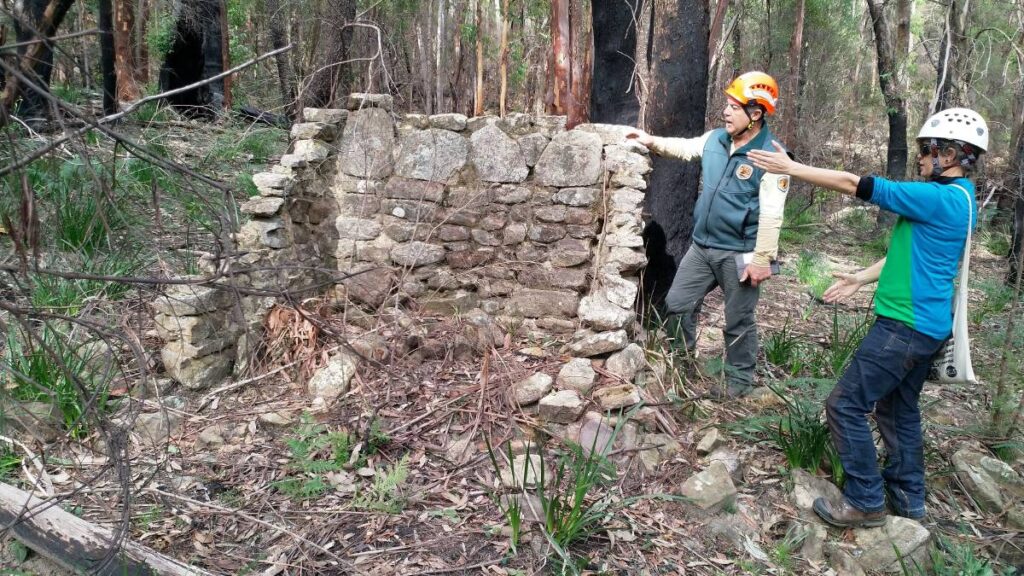Mining Camp Found in Southeast Australia
Researchers from Macquarie University were examining remains of industrial equipment that was used to haul shale out of the valley when New South Wales National Parks rangers alerted them to the presence of other structures and artifacts, including wall foundations, hearths, paving, corrugated iron roofing, ceramics, and glass that had been previously hidden by vegetation.

Since the summer bushfires, a staff camp has emerged near the Ruined Castle in the Jamison Valley. The fires uncovered previously vegetated remnants and artifacts, including the wall bases, hearths’ paving, and corrugated iron roofing, as well as ceramics and glass.
The remains of a shale mining settlement used by workers from the 1880s until around 1914 was studied by a team at Macquarie University.
Associate professors Tanya Evans and Shawn Ross, from the history and archaeology department, are working on the project with Professor Lucy Taksa from the Centre for Workforce Futures at Macquarie Business School.
The team was originally invited by NPWS and the Blue Mountains World Heritage Institute to survey the industrial remains associated with the Bleichert Ropeway, which was erected to haul the shale from the valley up the escarpment.
“Then NPWS approached the team about some ‘huts’ they had noticed while doing other work,” Associate Professor Evans said.
Local Katoomba identity, Phil Hammon, knew that workers had lived there during the mining period and encouraged that focus of the project. The team is now concentrating on new archaeological surveys and excavations in and around the mining settlement.
“Archaeologist members of the team will head to the Mountains ASAP to undertake another survey of the site, building on two earlier surveys,” Professor Evans said.
“Historian members will undertake archival research and organize oral history interviews and focus groups with local community members as soon as COVID-19 restrictions allow us.”
Professor Taksa said the team will combine archival, documentary, oral, photographic, and material evidence to reconstruct life in the village.
“The aim is to give ‘flesh and voice’ to the people who lived and worked at this place,” she said.
The summer fires will also enable them to assess the impact of bushfires on heritage sites.
“The study will be looking at the effects of ‘de-industrialization’ on the landscape – that is, the story of how this industrial village basically has returned to nature but has left certain impacts on the landscape.”
The information discovered through the study will be used for conservation and heritage, and also for tourism and education purposes.
Down the track, Professor Evans said they hope to gather more information on the area’s rich history through oral history interviews and focus groups.





